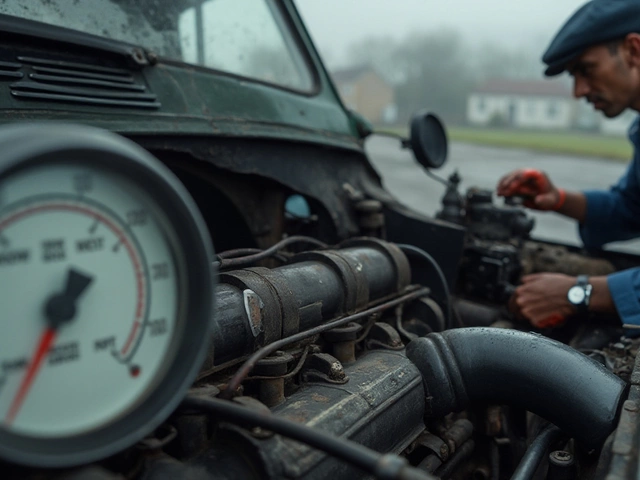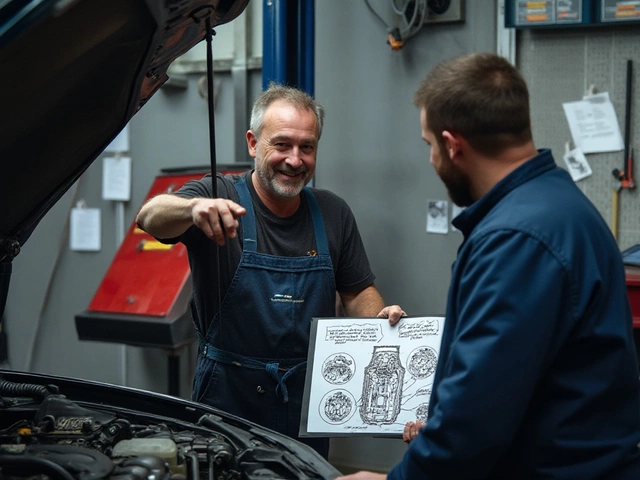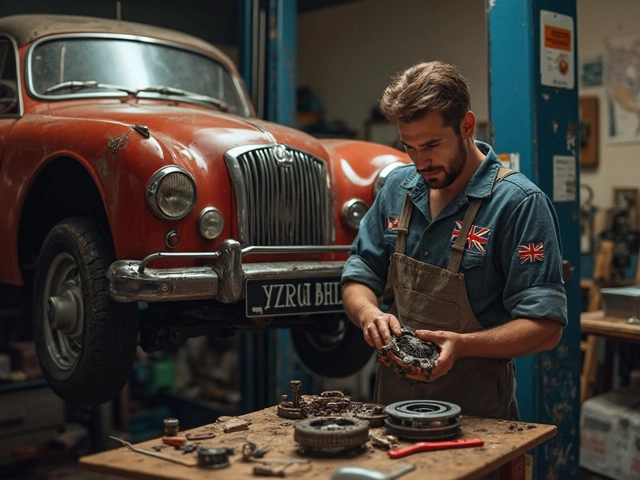Imagine parking your car after a weekend trip with your family, glancing at your wheels, and wondering—will those shiny alloy rims end up like those rusty old bikes we all abandoned as kids? You aren’t alone. I thought about this the first time Jasper, my son, got obsessed with car cleaning and pointed out 'weird spots' on my wheels. Thing is, people throw around the word 'rust' every time wheels lose their luster, but it’s not always that simple, especially with alloys.
What Are Alloy Rims—and What Actually Is Rust?
Right, so before you spend your weekend scrubbing or regretting a set of alloy wheels, let’s get something clear: not all metal corrosion is rust. That reddish-brown stuff you see on steel? Classic rust, thanks to iron mixing with oxygen and water—what we call iron oxide. But most alloy rims aren’t pure iron or steel. They’re a clever blend, usually dominated by aluminum (sometimes with magnesium or nickel thrown in), which completely changes the corrosion game.
What happens to aluminum alloys is called oxidation. This isn’t quite rusting as most of us know it, but a chemical reaction where oxygen causes a thin, white or dull-grey layer to appear on the surface. In fact, this oxide layer tends to shield the metal underneath—which is why you rarely see an alloy rim completely eaten away like an old iron gate. When you hear someone say their alloy wheels are 'rusting,' they’re usually seeing signs of surface oxidation or some other kind of damage, not the textbook definition of rust.
Check this out—here’s a quick table showing the main differences:
| Material | Corrosion Type | Typical Signs |
|---|---|---|
| Steel | Rust (Iron Oxide) | Red-brown flakes, pitting |
| Aluminum Alloy | Oxidation (Aluminum Oxide) | White/dull grey coating, minor pitting |
But there are twists. Modern alloy wheels often get coated with clear lacquers to keep road salts, moisture, and brake dust at bay. Chips or scratches in this protective layer can allow moisture to sneak in, leading to ugly spots or bubbling—sometimes mistaken for rust but actually a different beast.
And don’t get me started on winter in Manchester. Road salt is brutal on wheels. When Jasper and I walk past the football grounds in February, every third car has its wheels looking drab or even patchy. That’s because salt speeds up chemical reactions, making rims way more vulnerable than during the dry summer months. But even then, it’s usually the lacquer or paint failing—not pure rust attacking the metal like with old school steel wheels.
Alloys also don’t behave the same way everywhere. If you drive near the sea or park your car outside in rainy weather, those harsh conditions can accelerate oxidation and ruin the finish. Ever noticed how those who keep their car in a garage have cleaner, brighter wheels after a few years? That’s no accident.
But—and this bit surprised me—even alloys with stubborn corrosion rarely have their structural strength compromised. Unless you see deep cracks, crazy bubbling, or a chunk flaking off, the rim is usually okay for regular use. Most damage is surface-level stuff, treatable with cleaning or refinishing.
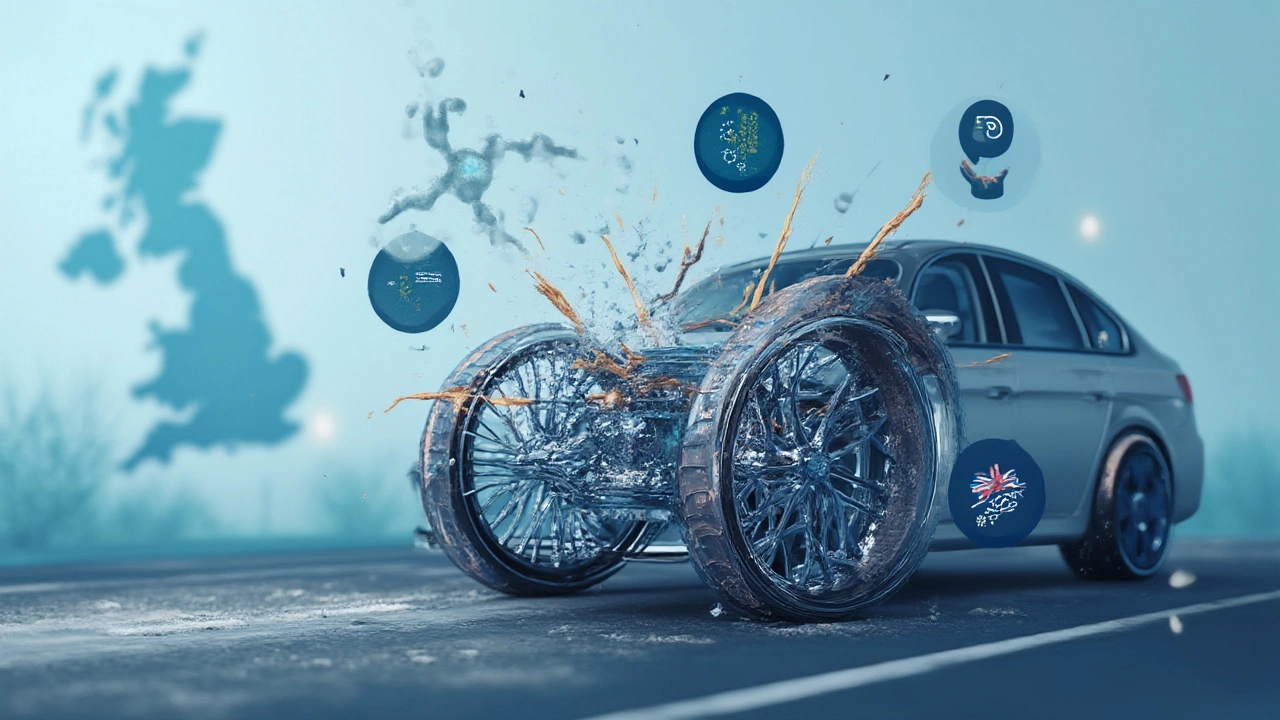
How to Spot and Prevent Alloy Rim Corrosion
Let’s say you just washed the car after a rainstorm and spot white-ish staining or some peeling on an alloy rim. Don’t panic. Here’s what you might be looking at—plus what you can do about it.
First, look for these signs:
- White, powdery patches or streaks—classic oxidation.
- Blistering or bubbling under the clear lacquer—moisture has crept in below the protective layer.
- Black tar-like stains or baked-on brake dust—this isn’t rust but can set off chemical reactions that speed up surface corrosion.
- Chipped paint or lacquer—like open doors for water and salts to attack the metal.
- Visible pitting or roughness—if you run your fingers over the rim and feel tiny holes, that’s the next stage.
Here’s a tip: If you spot any of these, get on it early. When I ignored a few chips on my own car, the winter road salts made things worse by spring. Jasper keeps reminding me, 'Dad, small problems become big problems!' No truer words, mate.
Here’s what actually works for prevention and cleaning:
- Wash wheels regularly with a non-acidic cleaner. Acid-based cleaners can eat away at both clearcoat and alloy if you’re not careful.
- Dry your wheels after every clean. Standing water (especially Manchester rain!) loves to hang around in weird places and kick off oxidation.
- Apply a wheel sealant or wax after you’re done cleaning. It adds another line of defense against road salts and brake dust.
- Avoid curb rash. Scraping up against kerbs isn’t just annoying; it exposes bare metal, which is a prime target for corrosion. Jasper actually made a game out of 'spot the curb rash' whenever we park—bit embarrassing sometimes!
- Keep an eye on scratches and chips, and touch up the finish before things get worse. You can buy touch-up kits or even get a place to do a quick refurb.
- During winter, wash off road salt often if you drive somewhere like Manchester where gritters blast the roads. Don’t wait for spring cleaning.
A lot of people buy harsh cleaners from the supermarket, but that’s sometimes the worst move. Last year, I saw a neighbour using an industrial wheel acid on his Audi—all that did was peel the lacquer clean off. Couple of weeks later, white spots all over. If you’ve already got corrosion, check out safe metal polishes or ask your local shop about professional refinishing.
In some cases, oxidation can go under the clearcoat. That means you’re not just dealing with a dirty wheel—you’ll have to strip the lacquer, polish the metal, and re-apply a new protective layer. It sounds faffy, but if you love your wheels (or hate paying for new ones), learning this pays off big.
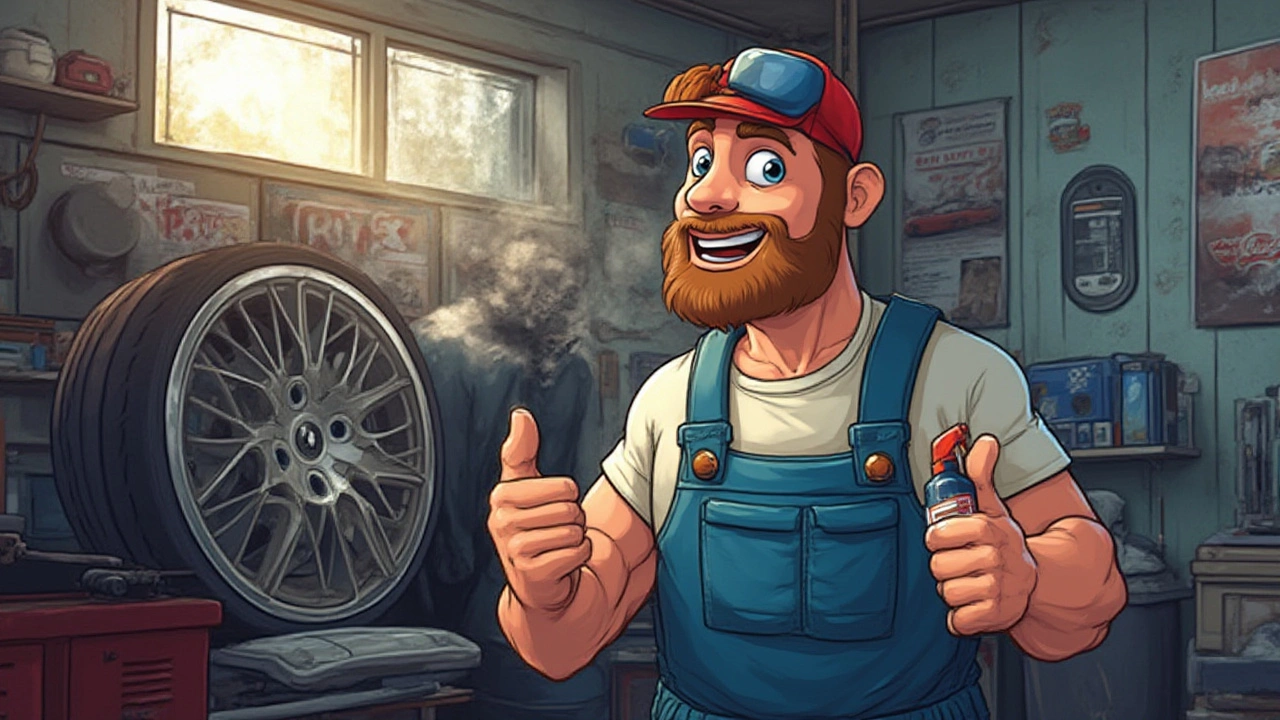
Long-Term Wheel Care: Keeping Alloy Rims Looking Good for Years
Alright, so you now know your alloy rims aren’t going to erupt into rust like an old railway bridge. Still, they aren’t invincible. Keeping them in good shape is less about battling 'rust' and more about looking after paint, lacquer, and the occasional bit of oxidation.
The single biggest factor is regular upkeep. Quick stats: The RAC says UK drivers spend, on average, £200 every two years replacing or refurbishing wheels—almost always because of cosmetic issues, not deep rust. So, you don’t have to throw cash at new alloys if you get the simple stuff right.
Here are a few things I tell my mates (and Jasper) when they ask how my rims still look decent after so many school runs and supermarket dashes:
- Keep wheels clean, especially after long drives or during gritty winters.
- Use soft brushes—tough wire brushes can scratch through clearcoat quicker than you’d think. I learned that the hard way with an old Mondeo years ago.
- Store your car under cover if you can. Outdoor parking doubles the risks of salt, rain, and even bird droppings (which are way more acidic than you’d guess and can eat into finish fast).
- If you notice bubbling or flaking, deal with it quickly. A small spot is easy to touch up; leave it six months, and sudden weather changes love making it worse.
- Consider powder coating for older rims. This process, which bakes a coloured resin onto the wheel, is super tough—loads of performance garages recommend it, and it’s not just for show cars.
Occasionally, you’ll see an alloy rim with severe corrosion, pitting, or even cracks. These are very rare, but if you see metal starting to split or deep gouges, get the rim checked straight away. Structural problems are nothing to gamble on—no one wants a wheel to fail at 70 mph on the M60.
Here’s a neat fact: The reason you don’t see many UK alloy rim recalls for corrosion is that modern alloys and coatings have gotten so good over the past two decades. Choosing reputable brands and keeping up with basic care makes a massive difference. I still see some older BMW and Audi alloys from the 2000s in great nick—all it takes is a cloth, wax, and not ignoring those little marks when they pop up.
Now, if you want to make your wheels last practically forever, some pros recommend treating the inside (the barrel) of the rim, too. That’s where water and grime settle, especially if you use the same wheels all year. Not a job most people think about, but once I started doing it, I noticed way less trouble with balancing and corrosion, and fewer trips to the tyre shop to fix leaks around the beads.
Makes you think—the difference between a tired, crusty wheel and a sparkling one isn’t luck, it’s small habits anyone can pick up. And if you’re ever puzzled over a weird spot or stubborn stain, remember: it’s nearly never classic rust. Usually, it’s just a nudge to show your alloys some quick TLC.
So next time you’re out with your kids and they’re asking what those spots are—you can tell them. And you won’t have to swap the wheels for new ones out of panic. Just a bit of regular effort, using the right stuff, and you’ll keep those alloys gleaming way past the next family road trip.
